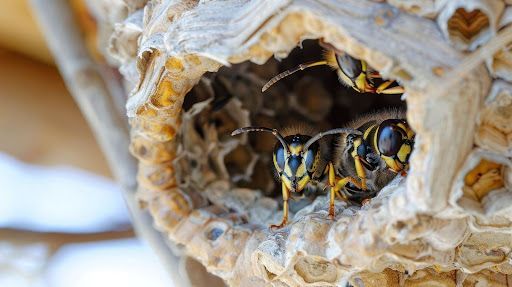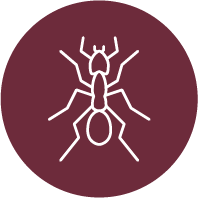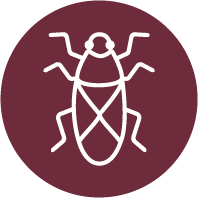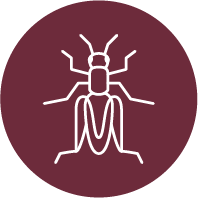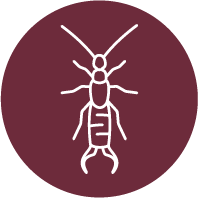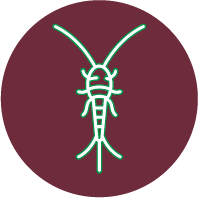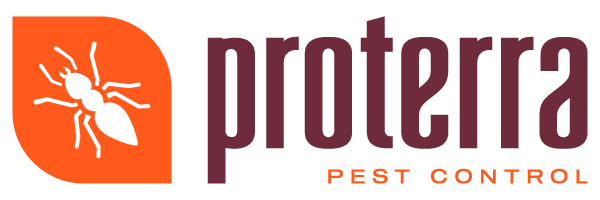Green Guards: Indoor Plants for Natural Pest Control and Air Quality
In the realm of indoor living, a growing trend is emerging: the use of indoor plants for both pest control and improving air quality. From warding off unwanted pests to purifying the air we breathe, indoor plants are proving to be invaluable allies in our quest for a cleaner, safer, and more sustainable living space.
The Value of Indoor Plants in Natural Pest Management
Incorporating indoor plants into our homes doesn't just enhance the visual appeal of our living spaces but brings with it an array of ecological benefits, especially in the realm of natural pest management. The concept of using plants as a means to deter pests offers an eco-friendly alternative to conventional chemical repellents, aligning well with the growing trend toward sustainability. This method not only promotes a healthier living environment but also contributes to the overall ecological balance by minimizing our reliance on chemical substances.
Various
indoor plants possess properties that naturally repel common household pests. For instance, the presence of certain plants can deter pests such as moths, flies, ants, and even rodents, which are drawn away by the specific aromas or substances released by these plants. Lavender, for example, is well known for its moth and beetle-repellent properties, making it a popular choice for those looking to protect their wardrobes from these fabric-destroying pests.
Similarly, mint plants can help keep ants and mice at bay, adding not only a fresh aroma to your home but also serving as a natural barrier against these unwelcome visitors.
But how exactly do plants achieve this? Many pest-repellent plants contain essential oils that act as natural deterrents. When these oils are released into the air, they create an environment that is less appealing to pests. This mechanism of action serves as an eco-friendly alternative to synthetic pesticides, offering a way to manage pest issues without introducing potentially harmful chemicals into your home.
The integration of indoor plants into pest management strategies represents a shift towards more sustainable living practices. By choosing to incorporate pest-repellent plants into our homes, we not only contribute to the creation of more ecologically balanced living spaces but also embrace nature's own mechanisms for dealing with pests. This approach not only helps in managing pest issues more naturally but also supports the broader goal of reducing our environmental footprint and fostering healthier living conditions.
The value of indoor plants extends beyond their aesthetic contributions to our homes. They play a crucial role in natural pest management, offering an eco-friendly alternative to chemical repellents. By understanding and leveraging the pest-repellent properties of certain indoor plants, we can create healthier, more sustainable living environments that benefit both ourselves and the planet.
Top Indoor Plants for Pest Repellent Properties
The strategic incorporation of specific indoor plants can transform your home into a natural fortress against pests. Here's a closer look at the top indoor plants known for their pest-repellent properties, backed by research from various university departments of botany and agriculture:
- Lavender: Celebrated for its soothing aroma, lavender also doubles as a repellent against moths, flies, and beetles. Placing lavender near entryways or in closets can significantly reduce the presence of these pests.
- Mint: This fragrant herb is a powerful deterrent for ants and mice. Its strong scent masks the pheromone trails ants use to navigate, making it difficult for them to invade your home. Similarly, mice are turned away by the potent aroma of mint.
- Chrysanthemums: This flowering plant contains pyrethrin, a compound used in many commercial insect repellents, making it effective against bedbugs, roaches, ticks, and silverfish. Adding chrysanthemums to your decor not only beautifies the space but also keeps these pests at bay.
- Basil: Known for deterring flies and mosquitoes, basil can be placed near windows or doors to prevent these pests from entering. Its effectiveness is attributed to the essential oils it releases, which are unappealing to these insects.
- Citronella: Famous for its mosquito-repellent properties, citronella is a must-have in any pest management plan. Though often found in candles and oils, growing the plant itself offers a more natural and decorative way to ward off mosquitoes.
Integrating Pest-Repellent Plants into Your Home Decor
Incorporating pest-repellent plants into your home decor requires strategic placement and proper maintenance to maximize their effectiveness:
- Strategic Placement: Consider placing these plants near entry points, windows, and areas prone to pests. For instance, placing mint near the kitchen can deter ants, while lavender in the bedroom can keep moths away from your clothes.
- Maintenance: Regular watering, adequate sunlight, and pruning are essential to keep these plants healthy and effective. A well-maintained plant is more likely to produce the oils and compounds necessary for repelling pests.
- Decor Integration: These plants offer both utility and beauty, making them perfect for echoing your home's aesthetic. Mint and basil can thrive in small pots on kitchen windowsills, adding greenery and aroma. Meanwhile, large chrysanthemums make stunning centerpieces that can protect the dining area from pests.
By selecting the right plants and strategically integrating them into your decor, you can enjoy a pest-free home that is both beautiful and natural.
Additional Benefits: Air Purification and Enhanced Indoor Environments
While the primary focus of incorporating pest-repellent plants in homes is to naturally deter unwanted insects and animals, these green companions offer more than meets the eye. A significant added benefit is their ability to purify the air, improving the indoor environment. Plants like chrysanthemums not only keep pests at bay but are also highlighted in studies, including NASA's Clean Air Study, for their ability to filter out common volatile organic compounds (VOCs) such as ammonia, benzene, and formaldehyde. This natural filtration system can lead to a healthier living space, reducing the risk of respiratory problems and enhancing overall well-being.
The
psychological benefits of indoor plants should not be overlooked either. Incorporating greenery into home decor has been associated with reduced stress levels, enhanced mood, and increased productivity. In essence, the presence of these plants can lead to a more pleasant and mentally stimulating environment, further contributing to the quality of indoor life.
Implementing a Holistic Approach to Pest Management
Natural pest management using indoor plants is a step in the right direction towards sustainable living. It is most effective when part of a broader, holistic approach to pest control. This means combining the natural repellent properties of plants with other eco-friendly and safe pest control measures. For instance, ensuring your home is clean and free of standing water can reduce pest infestations significantly. Similarly, sealing cracks and openings can prevent pests from entering in the first place, thereby reducing the need for any form of pest control.
For cases where pest problems are more severe, partnering with eco-conscious pest control companies, such as Proterra Pest Control, offers a solution that aligns with the ethos of minimizing environmental impact. These companies often use biodegradable and non-toxic substances that are effective against pests while being harmless to humans, pets, and beneficial insects. By combining these approaches, homeowners can protect their living spaces from pests in a manner that is both effective and respects the delicate balance of our ecosystem.
While the primary aim of integrating pest-repellent plants into our homes is to manage pest populations naturally, the benefits extend far beyond. From air purification to mental health improvements, these plants contribute significantly to our overall quality of life. Adopting a holistic approach to pest management, which combines these natural strategies with other eco-friendly measures, offers a comprehensive solution to pest problems while safeguarding the health of our planet.
Ready to embrace a more natural and eco-friendly approach to pest management? Proterra Pest Control is here to help you integrate effective, environmentally conscious solutions into your home pest control strategy. Contact us today to get started on a greener path to pest management.

